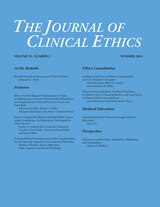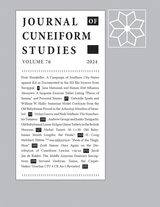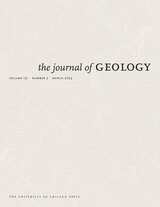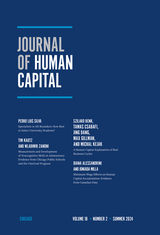19 start with A start with A

Amman and Russia call for immediate ceasefire
French riots extend to immigrant communities
Lawyers call for fair trial of Guantanamo prisoners
China aims at increasing trade with Russia
20 casualties in an earthquake in Pakistan
Headlines—print and broadcast—have gone global. As a result, news and information from authentic sources make a useful resource for foreign language learners.
Advanced Media Arabic systematically introduces authentic texts and audio files from a wide variety of media sources. This textbook helps students develop analytical and translation skills in Arabic and expand their reading, writing, listening, and speaking capabilities. The book emphasizes the semantic and stylistic aspects of media Arabic rather than its grammar and aims to equip students with the ability to listen to and converse about current events.
Organized by theme, each of the ten chapters covers current issues like:
o Diplomacyo Electionso Trade and Industryo Violence and Disordero Law and Ordero Economyo War and Military Actiono Natural Disasterso Terrorismo Arabic television talk shows
Each chapter provides important vocabulary; examples of language in context; exercises for reading and listening comprehension, writing, and translation; and a section for discussion and debate.
The listening material—60 minutes of spoken material—is available for free online at www.press.georgetown.edu.
Downloading Audio Files from press.georgetown.eduPlease click on the link under “Sample Content” to download a compressed zip file of all ten MP3 audio tracks that accompany the book. Files can be downloaded using a Mac or a PC. We recommend playing the files using iTunes or Windows Media Player. Please note that Georgetown University Press does not provide technical support for audio downloads.
For Mac, files will automatically be saved to your “Downloads” folder. (For older Macs, you may need to unzip the files using Stuffit.) To add files to iTunes, open iTunes, and click File>Add to Library and navigate to your file location.
For PC, save the compressed file to your desktop. Once the file has downloaded, go to the folder location on the desktop. Double-click the .zip file icon to unzip the file. Another folder will appear on the desktop. Open to reveal “Lahlali audio” folder. Open that folder to see all ten MP3 files. Import the files in to your music player from your file location by selecting all ten audio tracks, right-click and select Add to Playlist.
PLEASE NOTE: There are no audio files for lessons 6 and 7. Those lessons have reading passages only.

Headlines—print and broadcast—have gone global. As a result, news and information from authentic sources make a useful resource for foreign language learners.
Advanced Media Arabic, Second Edition systematically introduces authentic texts and audio files from a wide variety of media sources. This textbook helps students develop analytical and translation skills in Arabic and expand their reading, writing, listening, and speaking capabilities. The very successful first edition has been updated in a variety of ways, including:• New texts and audio for each module, including radio as well as TV materials • A new module on “The Language of Revolutions” and another on “Language andCulture” • New and more extensive exercises • New audio and vocabulary lists• Updated color design for the interior
Each chapter provides important vocabulary; examples of language in context; exercises for reading and listening comprehension, writing, and translation; and a section for discussion and debate.
The listening material—more than 80 minutes—is available for free online at www.press.georgetown.edu

Develop language skills and cultural knowledge essential for a career in the francophone world
Affaires globales' broad scope of disciplines and cultural content will appeal to students interested in a wide variety of careers while giving them the skills needed to pursue them. This intermediate-high to advanced-level French textbook is designed for French for specific purposes courses such as business or professional French and can be used as a main text for one semester or adapted for two semesters of use.
Affaires globales uses an interdisciplinary multiliteracies approach to help students develop the cultural knowledge and language skills necessary to pursue a career in the francophone world. Over the textbook's seven units, Affaires globales weaves in contemporary themes such as entrepreneurship, sustainable development, and global engagement with discussions of tourism, business, marketing, fashion, diplomacy, environmental studies, and global health. Lessons incorporate authentic materials from across the francophone world, from France to Quebec to sub-Saharan Africa.
Features:
A wide selection of activities—true or false, fill in the blank, multiple choice, and open-ended questions— allow students to engage with course material in varied ways
Chapter activities contribute to a semester-long project that helps students evaluate their career goals and reflect on their growth throughout the course
Free access to authentic multimedia resources and instructors' materials

of an entire field, rather than merely the fruitful exploration of a topic.
. . . [Kachru] is to be congratulated for having taken us as far as he
already has and for doing so in so stimulating and so productive a fashion."
-- World Englishes
"A potent addition to theoretical, sociolinguistic, attitudinal
and methodological explorations vis-à-vis the spread and functions
of, and innovations in, English from the viewpoint of a non-Western scholar."
-- The Language Teacher
Winner of the Joint First Prize, Duke of Edinburgh English Language
Book Competition of the English-Speaking Union of the Commonwealth, 1987
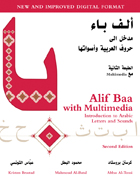
NEW AND IMPROVED DIGITAL FORMAT!
Since the release of the second edition of Alif Baa with DVDs in the fall of 2004, thousands of Arabic language learners have benefited from the integrated textbook and DVDs. This new version—Alif Baa with Multimedia—functions even better and features a new and improved digital format.
The content of Alif Baa with Multimedia, Second Edition, including the text and all of the audio and video on the disk, is exactly the same as that of Alif Baa with DVDs, Second Edition. Only the format of the disk has changed so that all files will be easy to play using the free Adobe Flash Player. All units are now included on only one disk. Teachers and students may use both versions of the textbook side-by-side in the classroom and notice no difference in content or appearance. It should not affect the learning experience or require teachers to do any additional preparation.
FEATURES• Introduces about 150 basic vocabulary words, including conventional forms of politeness and social greetings• Introduces a range of Arabic from colloquial to standard in authentic contexts• Includes video footage of an Arabic calligrapher, capsules on Arabic culture, and images of street signs from Morocco, Egypt, and Lebanon• Provides the essential first 20-25 contact hours of the Al-Kitaab program
The DVD that accompanies Alif Baa with Multimedia plays in any computer’s DVD drive. In order to view the files, you will need to download and install the free Flash Player from Adobe’s website.
System Requirements:
Windows• 450 MHz Intel Pentium II (or compatible) processor• MS Windows 2000, Windows XP, or Windows Vista• 128MB of RAM and 128MB of VRAM• Computer with DVD drive• Headphones or speakers• Flash Player (free download from http://www.adobe.com/products/flashplayer/)
Mac• 500 MHz PowerPC G3 or 1.33 GHz Intel Core Duo processor• Mac OS X v10.4 or 10.5• 128MB of RAM and 128MB of VRAM• Computer with DVD drive• Headphones or speakers• Flash Player (free download from http://www.adobe.com/products/flashplayer/)
Georgetown University Press is not able to provide technical support for the CDs and DVDs that accompany the Al-Kitaab series.
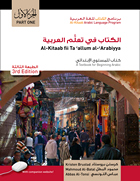
E-Textbooks are now available to purchase or rent through VitalSource.com! Please visit VitalSource for more information on pricing and availability.
As of January 1, 2021, Smart Sparrow Companion Websites are no longer available for any of our textbook programs. New companion websites are coming soon, and will be hosted by Lingco. Instructors may sample the new companion websites now by visiting GUPTextbooks.com/companionwebsites. The full websites will be available for fall 2021 course adoption.
Homework exercises are included in the textbook. Print answer keys are available for purchase through GUP. Ebook answer keys are available on the GUP website and VitalSource.com.
Al-Kitaab Part One, Third Edition is the second book in the bestselling Al-Kitaab Arabic Language Program. Part One uses an integrated approach to develop skills in formal and colloquial Arabic, including reading, listening, speaking, writing, and cultural knowledge. This comprehensive program is designed for students in the early stages of learning Arabic.
NEW: Audio and video content needed to complete the homework exercises is available to stream online for free on AlKitaabTextbook.com. (DVDs that once featured the audio and video are now obsolete and no longer included in the books.)
FEATURES
• Three varieties of Arabic—Egyptian, Levantine, and formal Arabic—presented using color-coded words and phrases• Over 400 vocabulary words in three forms of Arabic, side by side• Grammar explanations and activation drills, including discussions about colloquial and formal similarities and differences• Authentic texts that develop reading comprehension skills • Video dialogues and stories from everyday life in Egyptian, formal Arabic, and Levantine to reinforce vocabulary in culturally rich contexts, available on AlKitaabTextbook.com• Presents the story of Maha and Khalid in formal Arabic and Egyptian, and Nasreen and Tariq in Levantine• Arabic-English and English-Arabic glossaries, reference charts, and a grammar index
Instructors may request complimentary print or digital Teacher’s Edition exam or desk copies, which include the answer key. To request access to any of the Teacher’s Edition Vital Source eTextbooks, instructors may visit VitalSource.com and select “Faculty Sampling” in the upper right corner. Please note: While answer keys are sold separately from the Student’s Edition, the corresponding answer key is included in the Teacher’s Edition.

E-Textbooks are now available to purchase or rent through VitalSource.com! Please visit VitalSource for more information on pricing and availability.
As of January 1, 2021, Smart Sparrow Companion Websites are no longer available for any of our textbook programs. New companion websites are coming soon, and will be hosted by Lingco. Instructors may sample the new companion websites now by visiting GUPTextbooks.com/companionwebsites. The full websites will be available for fall 2021 course adoption.
Homework exercises are included in the textbook. Print answer keys are available for purchase through GUP. Ebook answer keys are available on the GUP website and VitalSource.com.
Al-Kitaab Part Two, Third Edition is the third book in the bestselling Al-Kitaab Arabic Language Program textbook series. Part Two focuses on strengthening reading and writing skills while continuing to grow conversation skills. This comprehensive program is designed for students in second-year or equivalent Arabic courses.
NEW: Audio and video content needed to complete the homework exercises is available to stream for free on AlKitaabTextbook.com. (DVDs that once featured the audio and video are now obsolete and no longer included in the books.)
FEATURES of Al-Kitaab Part Two, Third Edition
• Three varieties of Arabic—Egyptian, Levantine, and formal Arabic—presented using color-coded words and phrases• Extensive grammar explanations and activation drills, including discussions about colloquial and formal similarities and differences• Authentic texts that develop reading comprehension skills • Video dialogues and stories from everyday life in both Egyptian and Levantine to reinforce vocabulary in culturally rich contexts, available to stream on AlKitaabTextbooks.com• Continues the story of Maha and Khalid in formal Arabic and Egyptian, and Nasreen and Tariq in Levantine• Arabic–English and English-Arabic glossaries, reference charts, and a grammar index
(Cover image (c) Melissa A. Wall. Used with permission.)
Instructors may request complimentary print or digital Teacher’s Edition exam or desk copies, which include the answer key. To request access to any of the Teacher’s Edition Vital Source eTextbooks, instructors may visit VitalSource.com and select “Faculty Sampling” in the upper right corner. Please note: While answer keys are sold separately from the Student’s Edition, the corresponding answer key is included in the Teacher’s Edition.

The final and most advanced volume of the Al-Kitaab Arabic textbook program, Part Three is intended to help learners reach a superior level of proficiency by expanding vocabulary and providing paragraph-level activities in reading, writing, and speaking. More than thirty authentic texts by writers from across the Arab world address a range of political, social, religious, and literary themes and represent a range of genres, styles, and periods. Although the book focuses primarily on modern Arabic, classical Arabic texts have been incorporated into some of the lessons to introduce students to the continuity of the language throughout its history.
Like previous books in the series, Part Three presents vocabulary-building drills and contextualized explanations of grammar, with exercises designed to push students toward independent learning.
The original text and audio are now bound together in one volume along with new video material on DVD that continues the story of Maha and Khalid in Egyptian Arabic, making Part Three an invaluable textbook and reader.
Features:• Guides learners to the superior level of proficiency• Strengthens reading skills• Increases vocabulary acquisition• Refines and expands knowledge of sentence structure and the Arabic verb system• Provides extensive writing activities• Widens cultural background• Includes more than thirty authentic texts by writers from across the Arab world• Audio tracks have been remastered as MP3 files, recorded on one CD, and bound into the book• Includes all new video material on DVD that continues the story of Maha and Khalid• New video material continues instruction in the Egyptian dialect

This second edition includes one DVD bound into the book that feature contextualized vocabulary, cultural background and illustrations, and new listening comprehension materials with each lesson. Newly recorded colloquial audio and video materials also accompany each lesson and continue the story of Maha and Khalid and their travels to Cairo with brief explanatory vocabulary and notes provided in the text. The appendices include grammatical reference charts, an Arabic-English glossary, and a grammar index. The materials cover approximately 150 contact hours of instruction, and students who complete Part Two should reach advanced proficiency.
Each lesson in Part Two centers on a text that deals with a social, historical, literary, or cultural issue. In addition to the main reading text, students will also find additional authentic texts for reading and listening comprehension, vocabulary and grammar exercises, close listening and speaking activities, and cultural background for the reading.
The revised and repackaged Part Two has been restructured to reflect pedagogical developments over the last eight years, updated with new authentic reading and listening texts, and expanded with new video materials. In addition to the speaking, listening, and writing skills emphasized throughout each lesson, more time and emphasis is placed on activating vocabulary and structure with new activities for inside and outside the classroom.
FEATURES: • Provides basic texts of printed media to help students connect the written and aural/oral aspects of Arabic • Features intensive reading that is focused on grammar and pronunciation • Contains substantial amounts of drills and exercises to help students memorize and gain active control of an expanded vocabulary • Explores the root and pattern system of Arabic grammar and complex sentence structure using vocabulary, complex texts, and translation exercises • Develops writing skills at the paragraph level to encourage synthesis of vocabulary and grammar • Provides explicit instructions to students and instructors on drills and activities, including recommendations on appropriate exercises for inside and outside the classroom • Interactive DVD contains reading comprehension texts with new material and new listening comprehension material • DVD presents cultural background with illustrations and continues the story of Maha and Khalid using both Egyptian Colloquial Arabic and Modern Standard Arabic

Analyzing the Grammar of English offers a descriptive analysis of the indispensable elements of English grammar. Designed to be covered in one semester, this textbook starts from scratch and takes nothing for granted beyond a reading and speaking knowledge of English. Extensively revised to function better in skills-building classes, it includes more interspersed exercises that promptly test what is taught, simplified and clarified explanations, greatly expanded and more diverse activities, and a new glossary of over 200 technical terms.
Analyzing the Grammar of English is the only English grammar to view the sentence as a strictly punctuational construct—anything that begins with a capital letter and ends with a period, a question mark, an exclamation mark, or three dots—rather than a syntactic one, and to load, in consequence, all the necessary syntactic analysis onto the clause and its constituents.
It is also one of the very few English grammars to include—alongside multiple examples of canonical or "standard" language—occasional samples of stigmatized speech to illustrate grammar points.
Students and teachers in courses of English grammatical analysis, English teaching methods, TESOL methods, and developmental English will all benefit from this new edition.
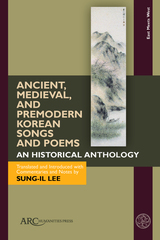
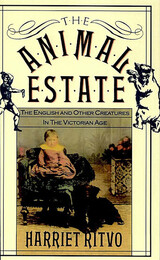
When we think about the Victorian age, we usually envision people together with animals: the Queen and her pugs, the sportsman with horses and hounds, the big game hunter with his wild kill, the gentleman farmer with a prize bull. Harriet Ritvo here gives us a vivid picture of how animals figured in English thinking during the nineteenth century and, by extension, how they served as metaphors for human psychological needs and sociopolitical aspirations.
Victorian England was a period of burgeoning scientific cattle breeding and newly fashionable dog shows; an age of Empire and big game hunting; an era of reform and reformers that saw the birth of the Royal SPCA. Ritvo examines Victorian thinking about animals in the context of other lines of thought: evolution, class structure, popular science and natural history, imperial domination. The papers and publications of people and organizations concerned with agricultural breeding, veterinary medicine, the world of pets, vivisection and other humane causes, zoos, hunting at home and abroad, all reveal underlying assumptions and deeply held convictions—for example, about Britain’s imperial enterprise, social discipline, and the hierarchy of orders, in nature and in human society.
Thus this book contributes a new new topic of inquiry to Victorian studies; its combination of rhetorical analysis with more conventional methods of historical research offers a novel perspective on Victorian culture. And because nineteenth-century attitudes and practices were often the ancestors of contemporary ones, this perspective can also inform modern debates about human–animal interactions.
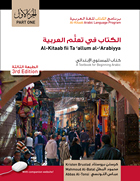
eBook Answer Keys are now available through VitalSource.com. Please visit their website for more information on pricing and availability.
This answer key is to be used with Al-Kitaab fii Tacallum al-cArabiyya: A Textbook for Beginning Arabic: Part One, Third Edition. Please note that this answer key contains answers for exercises that are in the book. It does not contain answers for exercises formerly on the Smart Sparrow Companion Website, which is no longer available after January 1, 2021.
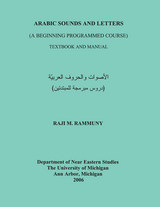
The textbook includes twenty lessons aimed at introducing Arabic sounds and writing system in a programmed method of instruction, supported by images and audio tapes*. The Manual consists of two parts. Part One includes a suggested methodology to guide teachers and students and Part Two contains basic communication needs in both Arabic script and transliteration to create a climate of enjoyable learning while students are acquiring the sounds and letters.
Raji M. Rammuny is Professor of Arabic Studies, Department of Near Eastern Studies, University of Michigan. He is the author of numerous books, including Advanced Standard Arabic through Authentic Texts and Audiovisual Materials, Parts 1 and 2, also published by the University of Michigan Press.
*The CD accompanying Arabic Sounds and Letters can be obtained from the UM Language Resource Center. Contact them by email at flacs@umich.edu or by phone at 734-764-3521.
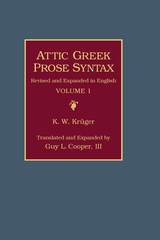
The language of classical Greek literature has been extensively studied since the Renaissance, and the most generally admired approach to Greek grammar and syntax has long been K. W. Krüger's Griechische Sprachlehre. In this translation Guy L. Cooper III accepts Krüger's simple and transparent organization, but greatly expands the substance of the earlier work by increasing the total number of citations from the original texts. Research since 1875, especially the contributions of Basil Lanneau Gildersleeve, is incorporated so as to create a reference work, in English, which covers the full range of this complex subject.
Krüger's original paragraph numbering has been maintained so that references in previously published works can be followed directly in the new work. However, every paragraph and chapter has been revised and expanded, opening up new subheadings within Krüger's format. The English has moved away from Krüger's laconic style to a more flowing, readable presentation, without jargon and unexplained technical language. A complete index of passages cited and the impressive number of citations make the work a running syntactic commentary on the whole range of Attic prose literature. The net result is a new comprehensive reference work, an essential reference for libraries and personal collections alike.
Guy L. Cooper III is Professor Emeritus of Classics, University of North Carolina at Asheville.
Volume 2
cloth ISBN 0-472-10844-1
Set of Volumes 1 & 2
cloth ISBN 0-472-10844-1
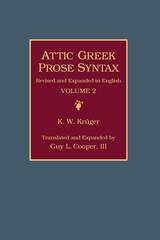
The language of classical Greek literature has been extensively studied since the Renaissance, and the most generally admired approach to Greek grammar and syntax has long been K. W. Krüger's Griechische Sprachlehre. In this translation Guy L. Cooper III accepts Krüger's simple and transparent organization, but greatly expands the substance of the earlier work by increasing the total number of citations from the original texts. Research since 1875, especially the contributions of Basil Lanneau Gildersleeve, is incorporated so as to create a reference work, in English, which covers the full range of this complex subject.
Krüger's original paragraph numbering has been maintained so that references in previously published works can be followed directly in the new work. However, every paragraph and chapter has been revised and expanded, opening up new subheadings within Krüger's format. The English has moved away from Krüger's laconic style to a more flowing, readable presentation, without jargon and unexplained technical language. A complete index of passages cited and the impressive number of citations make the work a running syntactic commentary on the whole range of Attic prose literature. The net result is a new comprehensive reference work, an essential reference for libraries and personal collections alike.
Guy L. Cooper III is Professor Emeritus of Classics, University of North Carolina at Asheville.
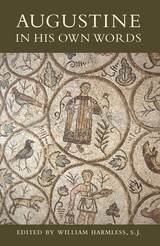
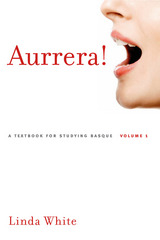
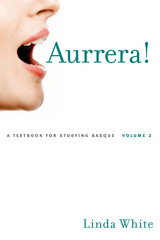
READERS
Browse our collection.
PUBLISHERS
See BiblioVault's publisher services.
STUDENT SERVICES
Files for college accessibility offices.
UChicago Accessibility Resources
home | accessibility | search | about | contact us
BiblioVault ® 2001 - 2024
The University of Chicago Press


